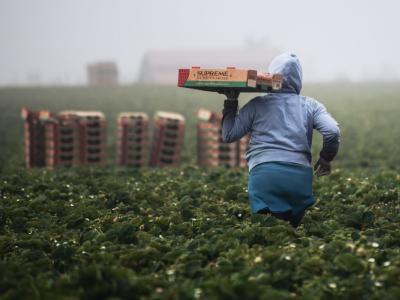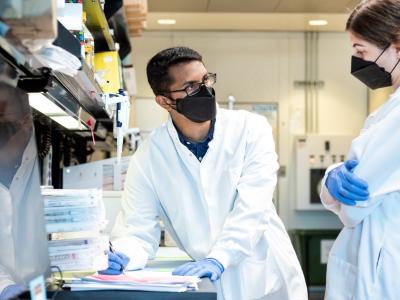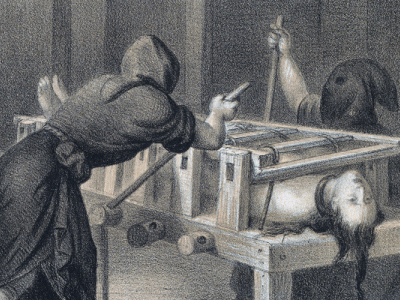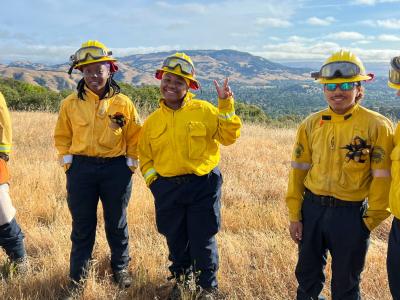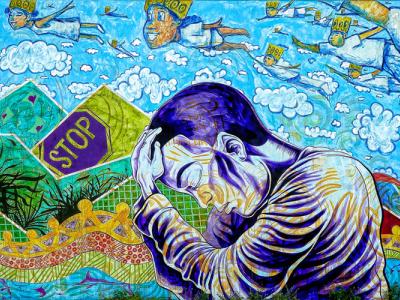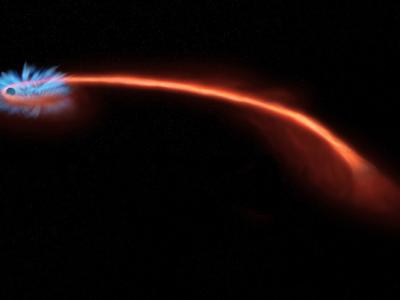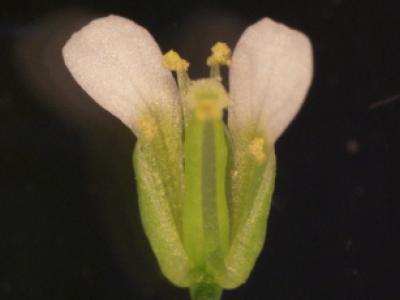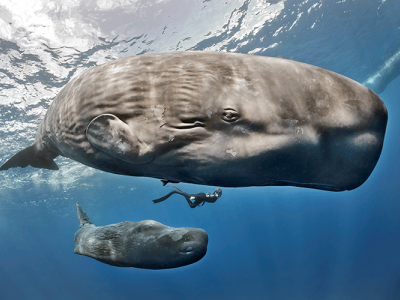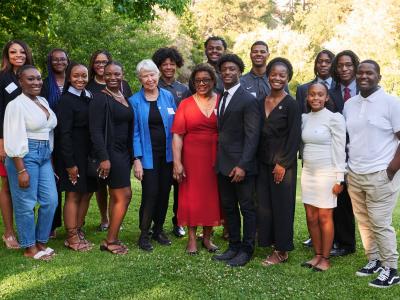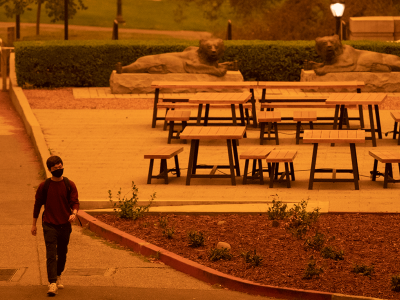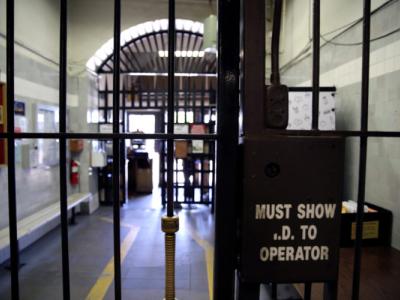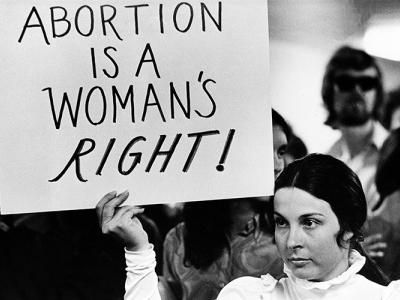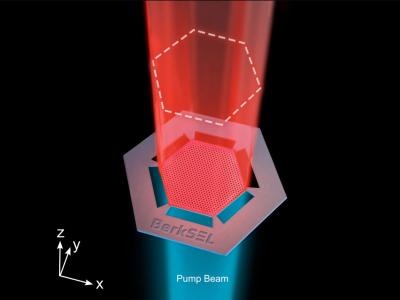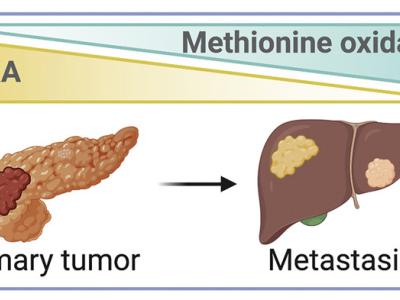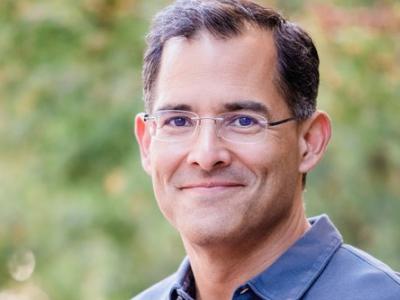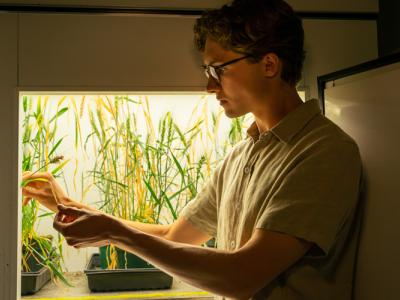UC Berkeley School of Public Health professors Julianna Deardorff and Andres Cardenas have been awarded a five-year, $2.7 million grant to study the impact of adverse childhood experiences on the health of Mexican-origin children.
Research News
Learn more about UC Berkeley's researchers and innovators.
Showing 689 - 704 of 3459 Results
As the Omicron variant of SARS-CoV-2 spread rapidly around the globe earlier this year, researchers at Gladstone Institutes, UC Berkeley, and the Innovative Genomics Institute used virus-like particles to identify which parts of the virus are responsible for its increased infectivity and spread.
Professor Ron E. Hassner's Anatomy of Torture is a telling of how the Roman Catholic Church used physical and psychological torture systematically to crush communities of Jews, Muslims, Protestants and others seen as heretics. In probing the practices of the Spanish Inquisition, Hassner makes a devastating argument against America’s use of torture four centuries later. In distilling that story, though, he comes to an understanding that is deeply disquieting and likely to provoke both proponents of torture and human rights advocates.
As another potentially devastating wildfire season begins, California is facing a shortage of wildland firefighters. To meet this challenge, the Marin County Fire Department and UC Berkeley have partnered to form FIRE Foundry (Fire, Innovation, Recruitment and Education), a program that recruits young adults from underrepresented communities for a career in fire service and trains them on cutting-edge firefighting technologies.
“If having a gun really made you safer, then America would be one of the safest countries in the world. It’s not,” said Gary Younge, a professor of sociology at Manchester University and former editor-at-large at the Guardian, in a lecture at UC Berkeley on March 4, 2020.
In 2019, astronomers observed the nearest example to date of a star that was shredded, or “spaghettified,” after approaching too close to a massive black hole. That tidal disruption of a sun-like star by a black hole 1 million times more massive than itself took place 215 million light years from Earth. Luckily, this was the first such event bright enough that astronomers from the University of California, Berkeley, could study the optical light from the stellar death, specifically the light’s polarization, to learn more about what happened after the star was torn apart.
Researchers in the Department of Plant and Microbial Biology (PMB) have uncovered the intricate molecular processes that precede reproduction in flowering plants. Published July 6 in Nature, the findings document a previously unknown molecular process that serves as a method of communication during fertilization. According to Professor Sheng Luan, chair of the PMB department and the paper’s senior author, the exact mechanism for signaling has previously eluded researchers.
At the University of California, Berkeley, a real and more down-to-earth mission to decode an unknown form of communication is underway. Linguist Gasper Begus and computer scientist Shafi Goldwasser are part of an international team of researchers attempting interspecies communication with sperm whales by deciphering their deafening, 200-plus decibel clicking sounds, or codas.
Tuskegee University and UC Berkeley recently announced the Berkeley-Tuskegee Data Science Initiative, a multi-year partnership to develop curriculum and collaborative research opportunities for students and faculty at both institutions.
As wildfires become more frequent and severe due to climate change, it’s increasingly important to determine how and when the resultant smoke will move toward communities. To assist with predictions, the National Oceanic and Atmospheric Administration (NOAA) turned to Tina Katopodes Chow, UC Berkeley professor of civil and environmental engineering, and her students.
Overcrowding, sometimes in antiquated buildings, compounded by rapidly changing conditions and the need for complex coordination, helped to drive a dramatic surge in COVID-19 in California’s prisons, according to a new report from the University of California, San Francisco, and the University of California, Berkeley.
In this Berkeley Voices episode, Luker talks about why doctors began writing anti-abortion laws in the 19th century, the experiences women had ending unwanted pregnancies in the decades before Roe v. Wade and how she doesn’t see us returning to the normative sexuality and reproduction of the 1950s.
Berkeley engineers have created a new type of semiconductor laser that accomplishes an elusive goal in the field of optics: the ability to emit a single mode of light while maintaining the ability to scale up in size and power. It is an achievement that means size does not have to come at the expense of coherence, enabling lasers to be more powerful and to cover longer distances for many applications.
Pancreatic cancer, though rare, is one of the deadliest of cancers, killing nearly 50,000 people yearly and doing so quickly, primarily because it metastasizes rapidly through the body. Barely one in 10 people survive beyond five years. But a discovery by chemists at the University of California, Berkeley, suggests a new way to slow or stop metastatic spread of pancreatic and perhaps other cancers.
David Schaffer, PhD, a University of California, Berkeley professor of chemical and biomolecular engineering, bioengineering, and molecular and cell biology, has been appointed the next executive director of QB3, the institute announced today.
Coming from a long line of Iowa farmers, David Savage always thought he would do research to improve crops. That dream died in college, when it became clear that any genetic tweak to a crop would take at least a year to test; for some perennials and trees, it could take five to 10 years. Faced with such slow progress, he chose to study the proteins in photosynthetic bacteria instead. But the advent of CRISPR changed all that.

